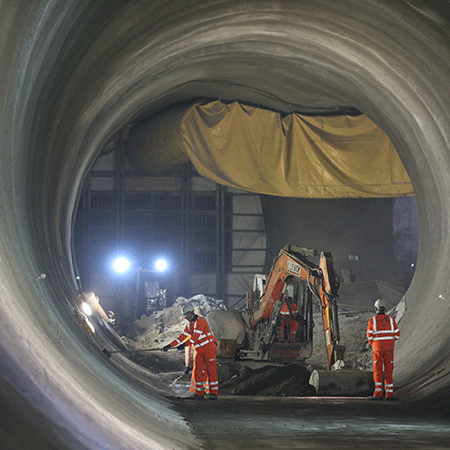Making sense of the UK Infrastructure Bank
With £12bn at its disposal, has the newly founded UK Infrastructure Bank got what it takes to be a success and fit into the country’s wider investment landscape? Nicholas Neveling reports

The chancellor confirmed that UKIB would have £12bn at its disposal to accelerate investment in infrastructure. This initial tranche of funding – comprising £5bn of equity and £7bn of debt – will be invested in equity, mezzanine and senior loan instruments. In addition, UKIB will be able to provide a further £10bn of loan guarantees.
The Budget announcement also revealed the bank will operate as a profitable, independent entity that will “grow through recycling and retention of return on investments”. UKIB’s strategy will be to leverage government investment through cornerstone projects and “crowding-in private capital”.
The objective is for UKIB to unlock up to £40bn of investment by injecting finance into projects that otherwise would not have progressed because of their perceived risk, as well as because of their large upfront capital expenditure demands.
Explaining where the funding will be deployed, the Treasury said UKIB has been given “a broad mandate to offer support across different sectors” and to make case-by-case assessments for investments in clean energy, transport, digital, water and waste, in line with the UK’s National Infrastructure Strategy, which was published in November 2020.
Can I have some more?
Does UKIB have ample funding to fulfil its mandate? Before the Budget announcement, John Armitt, chair of independent government advisory agency the National Infrastructure Commission, estimated that £20bn of investment over five years would be needed to make an impact and ignite new projects that the market wouldn’t support.
Meanwhile, PwC has forecasted that the UK would need to invest a minimum of £40bn a year for the next 10 years if it was to deliver net-zero carbon emissions by 2050.
Richard Abadie, head of infrastructure at PwC, comments: “The chancellor said that the £12bn of funding and £10bn of loan guarantees will get £40bn of projects done, but that’s the equivalent of one year’s need. The funding from UKIB is to be welcomed and will be useful, but it won’t be enough in isolation.”
The fact that UKIB will have to operate on a commercial footing also raises questions about how much room it will have to deploy capital into green infrastructure and technology. Investment in these areas will be essential for achieving net-zero targets, but these assets are still nascent and untested commercially.
Says Abadie: “It will be interesting to see to what extent the bank will have the scope to back infrastructure that has potential but is still unproven, given that UKIB will have to be profitable.
“By contrast, if you look at the way Canada’s infrastructure bank has been structured, it has been capitalised with C$35bn [£20.1bn] and has room to lose up to C$15bn [£8.6bn] of that. UKIB is effectively operating with a double bottom line, and is therefore able to move further up the risk curve to catalyse investment in green infrastructure.”
Broad strokes
UKIB’s cost of capital will steer where it is likely to deploy its funds. To start, the bank’s investment remit has been broadly defined. The Budget and policy document indicated that helping to achieve net-zero carbon emissions by 2050 will be one of its core aims. Another is support for regional and local economic growth, in line with the government’s manifesto pledge for a ‘levelling-up’ agenda.
These objectives suggest that the bank will have scope to invest across the infrastructure spectrum. Projects may range from established verticals, such as transport, water and power, to newer assets, including carbon capture and electric vehicle charging points.
Designing UKIB in this way will, to an extent, position it as a replacement for the financing that came from the European Investment Bank (EIB) before Brexit.
Another proposition
This approach will also differentiate UKIB from the EIB, which provided attractively priced financing to infrastructure projects that often would have been able to tap global capital markets anyway. Abadie sees limited value in UKIB going down a similar route when there is already ample private sector appetite to address investment demand.
“UKIB financing should not be concessional in any shape or form,” says Abadie. “If anything, it should be more expensive, given the risk profile it will be taking. Rather than crowding out private sector investors in proven infrastructure categories, UKIB should look to areas where there are credible solutions in place, but a commercial model is still unclear.”
He cites early stage net-zero technologies that support the decarbonisation of power, transport, buildings and industry, such as carbon capture, electric vehicles and hydrogen fuel, as likely areas for UKIB support.
A brave future
It is hoped that by going down this route, UKIB can play a role in de-risking greenfield infrastructure projects that will help to deliver net zero, and draw in private sector investors who would otherwise be too nervous to commit to financing large, upfront construction costs for projects yet to deliver income streams.
About the article
Read the full article extracted from Corporate Financer May 2021 edition. Exclusively for Corporate Finance Faculty & Faculties Online members, you can access our highly regarded magazine in its originally designed form, and our extensive archive brought to you by the ICAEW Corporate Finance Faculty.

